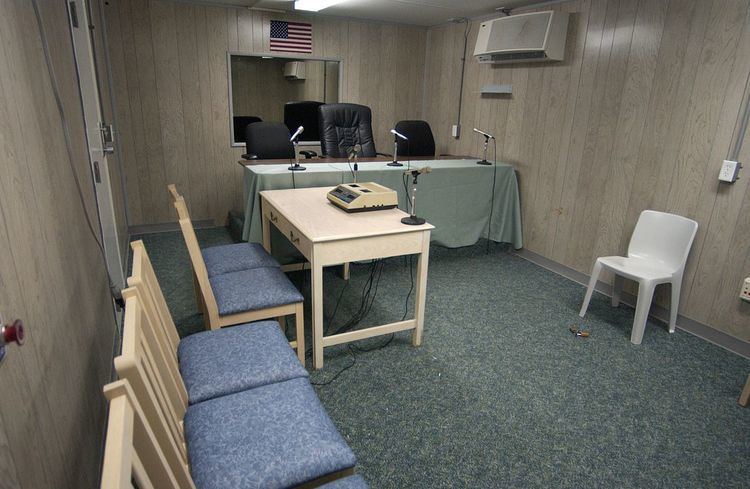ISN 234 | Name Khalid al-Zahrani | |
 | ||
Charge(s) no charge extrajudicial detention Status repatriated in July 2007 Detained at Guantanamo Bay detention camp | ||
A Saudi candidate to become one of the September 11 hijackers, Khalid Saeed Ahmad al-Zahrani (often misspelled as Zaharni) was an al-Qaeda member, held in extrajudicial detention in the United States's Guantanamo Bay detention camps, in Cuba. His Guantanamo Internment Serial Number was 234. His arrival in Guantanamo is recorded as February 11, 2002. His repatriation is recorded as July 17, 2007. His first interrogation is recorded on April 20, 2002 when his first interrogation is recorded.
Contents
- Combatant Status Review Tribunal
- Summary of Evidence memo
- Hunger strike
- Administrative Review Board
- 2005 Administrative Review Board hearing
- 2006 Administrative Review Board hearing
- Repatriation
- References

According to the 9/11 Commission, he attended "terrorist training camps", including Al Farouq in Afghanistan for eleven years. The 9/11 Commission reports:
"Khalid Saeed Ahmad al-Zahrani. He traveled to Afghanistan illegally after being prohibited by Saudi authorities from leaving Saudi Arabia. After being assigned to a mission in the U.S., he secretly reentered the Kingdom but failed in an attempt to have his name removed from the list of prohibited travelers so that he could obtain a U.S. visa. See Intelligence reports, interrogations of detainee, April 20, 2002; October 4, 2002; April 3, 2003.He was sent, but failed, to convince Mushabib al-Hamlan not to abandon his training, after Hamlan left the training camp to remain with his ill mother.
He was later selected for an unknown mission in the United States, believed to have been the 9/11 hijackings, and re-entered Saudi Arabia to apply for a legitimate travel visa, but was denied an application because his name was on a Saudi watchlist of persons to be refused to travel outside the country.
Combatant Status Review Tribunal
Initially the Bush administration asserted that they could withhold all the protections of the Geneva Conventions to captives from the war on terror. This policy was challenged before the Judicial branch. Critics argued that the USA could not evade its obligation to conduct competent tribunals to determine whether captives are, or are not, entitled to the protections of prisoner of war status.
Subsequently the Department of Defense instituted the Combatant Status Review Tribunals. The Tribunals, however, were not authorized to determine whether the captives were lawful combatants—rather they were merely empowered to make a recommendation as to whether the captive had previously been correctly determined to match the Bush administration's definition of an enemy combatant.
Summary of Evidence memo
A Summary of Evidence memo was prepared for Combatant Status Review Tribunal on September 24, 2004. The memo listed seven allegations:
Hunger strike
In 2005, he partook in a hunger strike to protest the Qur'an desecration controversy
Administrative Review Board
Detainees whose Combatant Status Review Tribunal labeled them "enemy combatants" were scheduled for annual Administrative Review Board hearings. These hearings were designed to assess the threat a detainee might pose if released or transferred, and whether there were other factors that warranted his continued detention.
2005 Administrative Review Board hearing
A Summary of Evidence memo was prepared for Khalid al-Zahrani's first annual Administrative Review Board. The three page memo listed 16 "primary factors [which] favor continued detention" and 1 "primary factor [which] favors release or transfer".
Among the factors al-Zahrani faced were:
2006 Administrative Review Board hearing
A Summary of Evidence memo was prepared for Khalid Mohammed Al Zahrani's second annual Administrative Review Board. The three page memo listed 20 "primary factors [which] favor continued detention" and 1 "primary factor [which] favors release or transfer".
Among the additional factors al-Zahrani faced were:
Repatriation
On November 26, 2008 the Department of Defense published a list of the dates captives were transferred from Guantanamo. According to that list Al Zahrani was repatriated on July 15, 2007.
